THE history of drag racing is a rich roll call of innovators, entrepreneurs and all-action heroes. Yet only one man can lay claim to a successful Hollywood acting career and the title of first professional drag racer. That man is ‘TV’ Tommy Ivo.
TV has lived in the same house, in the same peaceful Los Angeles suburb, since 1948. It’s a tranquil yet unassuming home, considering Ivo’s full and frantic life.
First published in the March 2020 issue of Street Machine. Photos: Matthew Howell
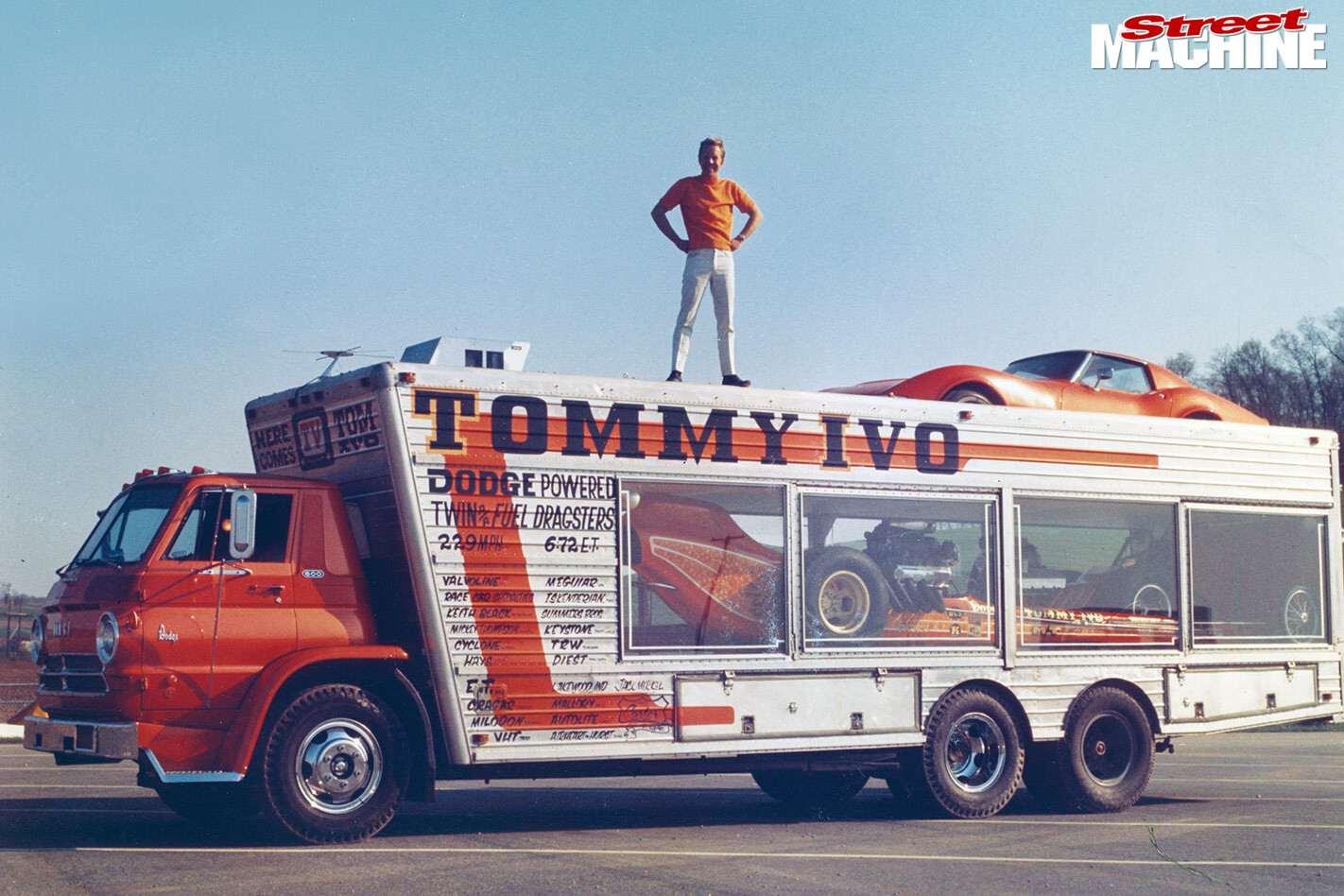
Tommy in ’68 with his transporter, which held two Fuellers and his ’Vette
Hanging from the walls of the sitting room are mementos from the dozens of movies and hundreds of TV shows in which Tommy appeared. And in the display cabinets that punctuate the living space are reminders of a ground-breaking and earth-shaking drag racing career that saw him marry his lust for new experiences with an unquenchable desire to entertain and win.
You managed to pack more into your childhood and teenage years than most people do into a lifetime. What are your earliest recollections of drag racing?
I lived in southern California, which is where drag racing started, so when I was 16 I did what you did at that age, and I bought a car. My girlfriend lived across the street so we pedalled our bikes uptown and collected brochures from all the dealers. We then spread them out on the ground and I thought the Buick looked the best. Thanks to my movie money, I had the only new car in school.
It wasn’t long before someone suggested we go to the drag strip. I said: “What the heck is that?” They told me you could go out there and drive your own car on the race track and that sounded like a pretty good idea to me.
I went to the track and made one run just to try it out and another in eliminations, but the straight-eight Buicks weren’t too fast. I didn’t think that was so red-hot. But that was the car that got me started building race cars and why I picked such an odd engine to go racing with.
Track officials were spooked by the speed of Tommy’s T-bucket, so he built this ugly-but-sturdy jalopy in retaliation
You were actually born in Denver, Colorado. How did you find yourself in southern California?
I could sing like a 10-year-old when I was three and I had all this curly blonde hair; people would tell my mother she should take me to Hollywood and get me in the movies. Well, at the time, we were dead poor and my mother had arthritis so bad she was all but in a wheelchair. One winter we decided to travel to California to see if the better weather would help
my mum and to see if we could get little Tommy in the movies. They both worked.
The T-bucket was cover-worthy — and unbeaten in its class at the drags
Did you find it tough to catch a break initally, when you arrived in California?
The catch-22 was if you didn’t have an agent you couldn’t get out and interview for parts, and if you hadn’t made a movie you couldn’t get an agent. But I guess I had a little acting ability because after I stumbled my way into my first movie I went on to make about 100 others and a couple of hundred TV shows over 19 years.
Having become a Hollywood success at such an early age what made you choose drag racing over acting?
The thing I didn’t like about the movies and that I did like about drag racing was that with the racing came an audience. In 1954, I bought my second new car, a V8 Buick Century. I took it to the Pomona drag strip, won the class and set a track record. I got two trophies, and was hooked. I then saw Norm Grabowski’s T-bucket and decided to build and race one of my own.
Ivo moved to a single-engine rail, before building this twin-engined rail in ’59. It became the first car to run an eight on gasoline, with Nailhead V8s and four-wheel drive
How did your movie career help with the drag racing?
The movies gave me an education most people don’t get. Acting with big stars such as Gene Autry and Roy Rogers made me the centre of attention on set and with that came responsibility. It is also why I built such nice-looking cars — other than I wanted them on the covers of magazines.
How else did the Hollywood experience help?
When I first toured north America with my cars, the Margie show was on television, so I would send out 30-second film clips to the various tracks. They would ask: “What do we do with this?” and I’d tell them to use it for TV promotion and that they should say Haywood Botts from Margie is coming into town to run his race car; I think more people turned up to see the movie star than they did the race-car driver. But I’m sure the people became race fans for years to come once they saw all the fire and smoke and realised they could drive their own cars on the track.

Tommy’s biggest prang was this shocker in ’74 — but he walked away without a scratch
Is it true that you were the first drag racer to go on tour nationwide?
That’s right — I was the first guy to go touring from coast to coast, all season long. Now, Don Garlits came out of Florida and would run up to Georgia to race on the weekend, but then he would hook it back home because he had a shop to run. The difference for me was if I wasn’t in a movie at the time, I wasn’t working, so I could be on the road for the whole season; I hadn’t gotten married at that time and I was so consumed by the idea of these cars that when I got the chance to tour, I was in.
You have a huge amount of energy and a lust for life. Where does that come from?
I always wanted to check off my bucket list — you know, a couple of trips upside-down and backwards at 200mph in a drag car makes you realise things might not always end so good. So I dove out of aeroplanes and anything else I could get my paws on.
My dad died at 59. When I got to that age I was feeling real mortal so for my 60th birthday I took a trip around the world to celebrate. A couple of days before I actually turned 60, I was in New Zealand and I bungee-jumped off a bridge. That’s a pretty good thrill, I can tell you.

Wheels in the air in ’67.Tommy was one of the first full-time drag racers, and ran countless match races, scoring the first seven and five-second passes along the way
What was the touring really like?
When we were travelling with these race cars it was like being on vacation. At that time we didn’t have to do as much work on them as they do today; we would run on the weekend, look at the car on a Monday and then we had three or four days to ourselves. So we would travel from, say, Seattle to Chicago and we would stop by Yosemite or Mount Rushmore, and I took the opportunity to do things like that all the time.
Innovation was key when it came to the cars you were racing but entertainment still seemed to drive that side of things.
I always had it in my mind that the touring thing could become something important. At the time I had the twin-engine car and I figured that if the crowd liked that, they’d love four. Back then we weren’t allowed to use nitro so when you ran out of power with one motor you put in two. That’s where the twin-engine car came in, and it was the baddest bear in the woods.
So the next step was the four-engine car.

Ivo took part in a tour of the UK in ’64, introducing drag racing to the Poms
Was winning races or entertaining the crowd more important to you?
It was a mixed bag. Being as I was 115lb, I liked the racing part of the deal because I could kick sand in the bullies’ faces. But the movies had a huge influence on things like Show Boat [the four-engine car] which was really an evolution. Out of my 36 cars, that is the one everybody knows — it’s my signature car.
Show Boat caused some problems with the TV studio, right?
Yep. In ’62 Hot Rod magazine put the car on the cover, with me and my Margie co-star Cynthia Pepper in the photoshoot. Up until then, the studio had never really been aware of my drag racing hobby and when they found out, they banned me from driving.
So how did you get back into racing?
The Margie show was cancelled in 1961 and I was free to do what I liked, so I gave up show business and became a full-time racer. I opened a chassis shop with Rod Pepmuller. We built the first car in less than a week, named it Barnstormer and beat Don Garlits first time out. Things really took off then.
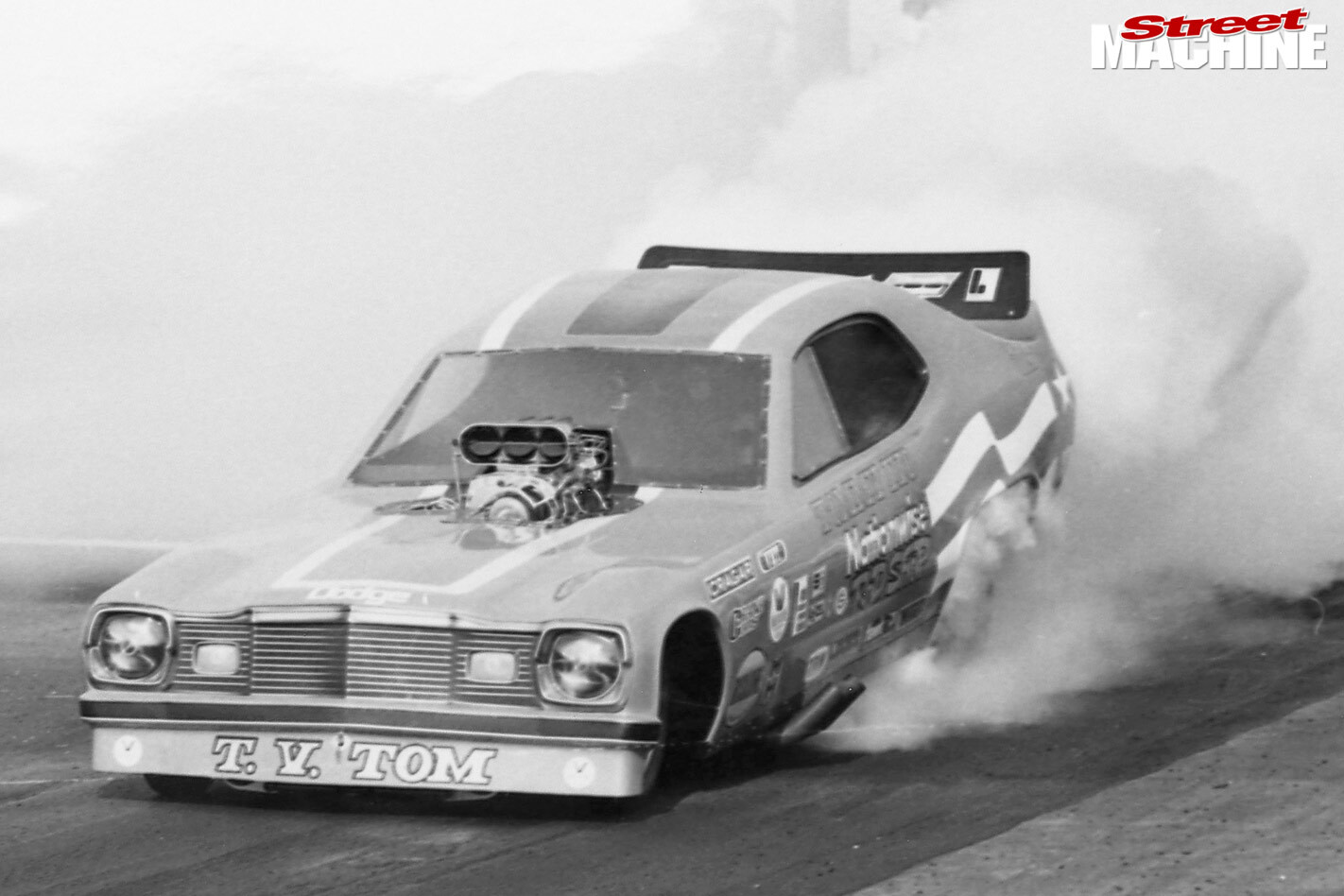
Tommy ran Funny Cars in the mid-70s, before moving on to jet cars until his semi-retirement in 1981
How so?
Well, I beat Don Prudhomme into the seven-second zone by a week, so I approached a track owner with the proposal to match race the first two cars into the sevens and pay us $500 each. We packed the joint out and ran the first side-by-side sevens.
By the mid-60s I was match-racing Don Garlits maybe 60 or 70 times a year, making $1000 per race.
And you followed Don Garlits into a rear-engine Top Fueller pretty quickly.
Yes, Don lost part of his foot in a front-engine dragster accident and made his comeback in the first rear-engine car at the ’71 Winternationals. I switched to a rear-engine car in ’72 and we were the first to break into the five-second zone later that year.
Ironically, you suffered your first real big crash in a rear-engine car.
Yes, in 1974. I was in a new Don Long car and on my fourth pass in that, it spat an engine. The car rolled and all I could think was: “I’m going way too fast to be doing this,” but luckily I didn’t get a scratch.
Then you moved on to Funny Cars.
They were really the popular thing. Fun to drive too, I could do long burnouts without losing control. I did that for three years but by then I had got married and didn’t have enough time to put into the cars and I was starting to tear up parts, so I moved to jet cars.
What drew you to the jets?
I was always facinated by them. I bought J-34 engines from a salvage yard for $25 each and got Ron Attenbury to build a car for me. I loved working on them and they were the most awesome things I ever drove. That only lasted a couple of years. I needed a real life and decided to do one last tour with my old four-engine car.
After all the success and excitement of your career, it must have been hard to stop.
Everything has worked out pretty good. I travel the world and have a third career with the museums, the whole nostalgia boom and restoring cars. When you quit racing, it only takes a couple of years for them to forget you — you go away pretty fast.
But in my case I’ve lived long enough to find out I have stood the test of time.
When I turned 70, I got into the Motorsports Hall of Fame of America alongside Andretti, Petty, Earnhardt and all the boys.
That was the icing on the cake and I have my bucket list all checked off.
THANKS to Tony Thacker and the Wally Parks NHRA Motorsports Museum, Pomona, California.

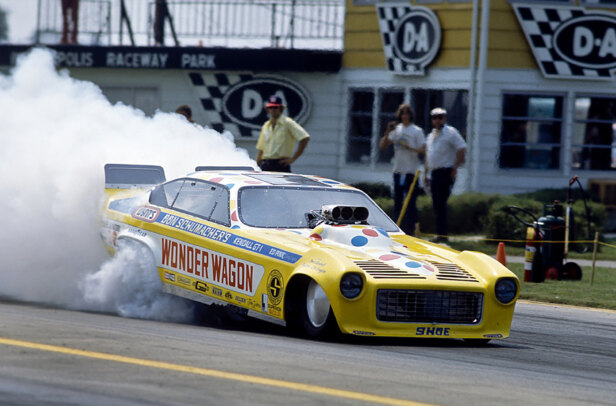
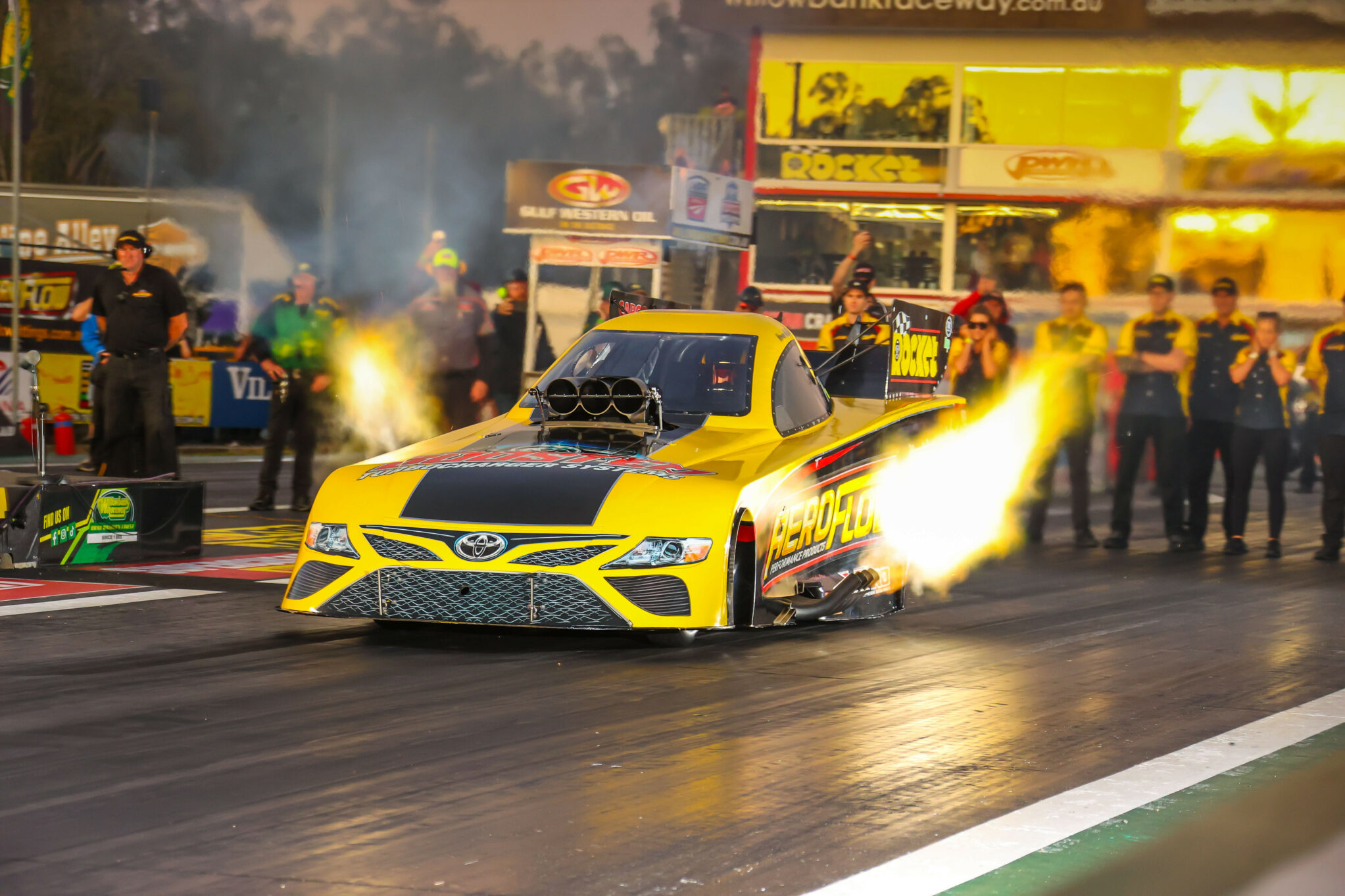
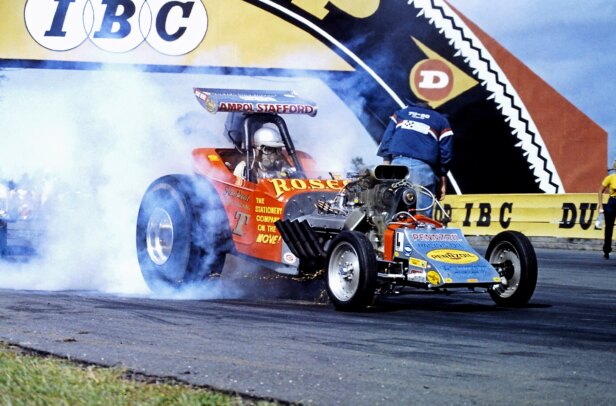
Comments